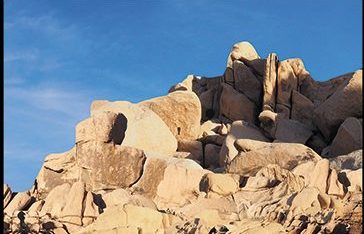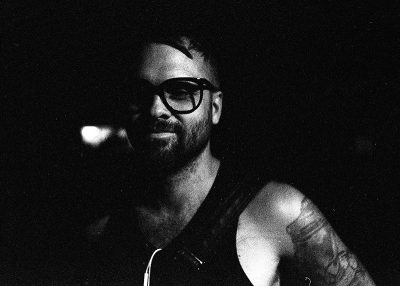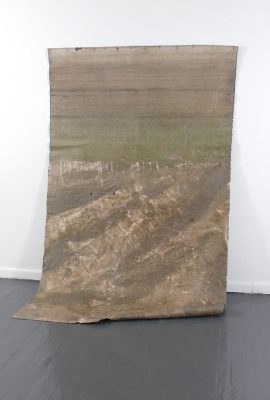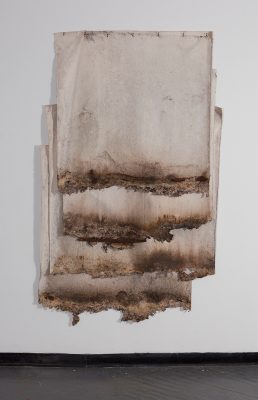
Desire Lines at UMOCA: Kelly Larsen
Art
The Utah Museum of Contemporary Art’s (UMOCA) Main Gallery exhibition, Desire Lines, went up on Jan. 26. The show explores representations of the erosion that living beings exact onto the landscape via creating pathways. Of 15 total, Desire Lines features three local artists, Jane Christensen, Janell James and Kelly Larsen, who discuss their participation in the show.
Kelly Larsen
SLUG: Please tell us some background about you as an artist and your present artistic practice.
Kelly Larsen: After 15 years of sculpting self-identity and exploring various art material, I have come to a place of working with community and using non-art material. I work with material that is typically ubiquitous, either natural or non-natural, such as grocery bags and water bottles. Toxics in the environment are a big concern of mine. The Rose Park area was deemed a superfund site by the US government and is now covered up by residential housing, as is Magna. Utah Lake’s annual blue-green algae bloom should be taken more seriously. Presently, I am working on projects that I hope encourage individuals and corporations to consider the effects of hidden disasters and consumption in their daily decision-making.
SLUG: How does your work in the show represent the landscape?
Larsen: I went to the East Coast to see how the landscape would affect me and my work. Soil has always had a say in my art, as I throw it at wet paintings, bury them in the ground and grow certain plants so that their roots will attach to the painted surface. In Brooklyn, it is hard to find soil, unlike my homeland of Utah. So I gathered organic material where I could to make my own.

My piece, Soil Soak, is a documentation of the process. The other piece, Newtown Creek, 10/10/12 – 01/10/13 is a nine-foot canvas that was attached to the wall of this creek to document the ebb and flow of the toxic tides.
SLUG: Specifically regarding the definition of desire lines being paths created by human- or animal-footfall traffic, how does your work respond to that idea?
Larsen: People make bridges to cross waters. We also build concrete walls to keep the water from obstructing our paths. I find it fascinating that Newtown Creek, with its industrial neighbors, is such a catastrophe and that places like this were formed. While I was in Brooklyn, Hurricane Sandy stirred up the creek and E. coli spilled into homes and art studios. Many artists decided it wasn’t worth keeping the contaminated art.
SLUG: Given the politicized state of the Utah landscape in light of Bears Ears National Monument and the conversations happening around the landscape, how might your work comment on or participate in that dialogue?
Kelly Larsen: I don’t own this land. I believe that we all share it regardless of roads, signs and gates that prevent us from walking on intriguing paths. Contamination flows and doesn’t abide by bureaucratic bullshit. Walls won’t last, but toxic waste will.
SLUG: Besides Desire Lines, how may people see/find your work, whether online, in person or otherwise?
Kelly Larsen: kellylarsen.com
Desire Lines is at UMOCA (20 S. West Temple) through May 26. For more information, go to utahmoca.org.

